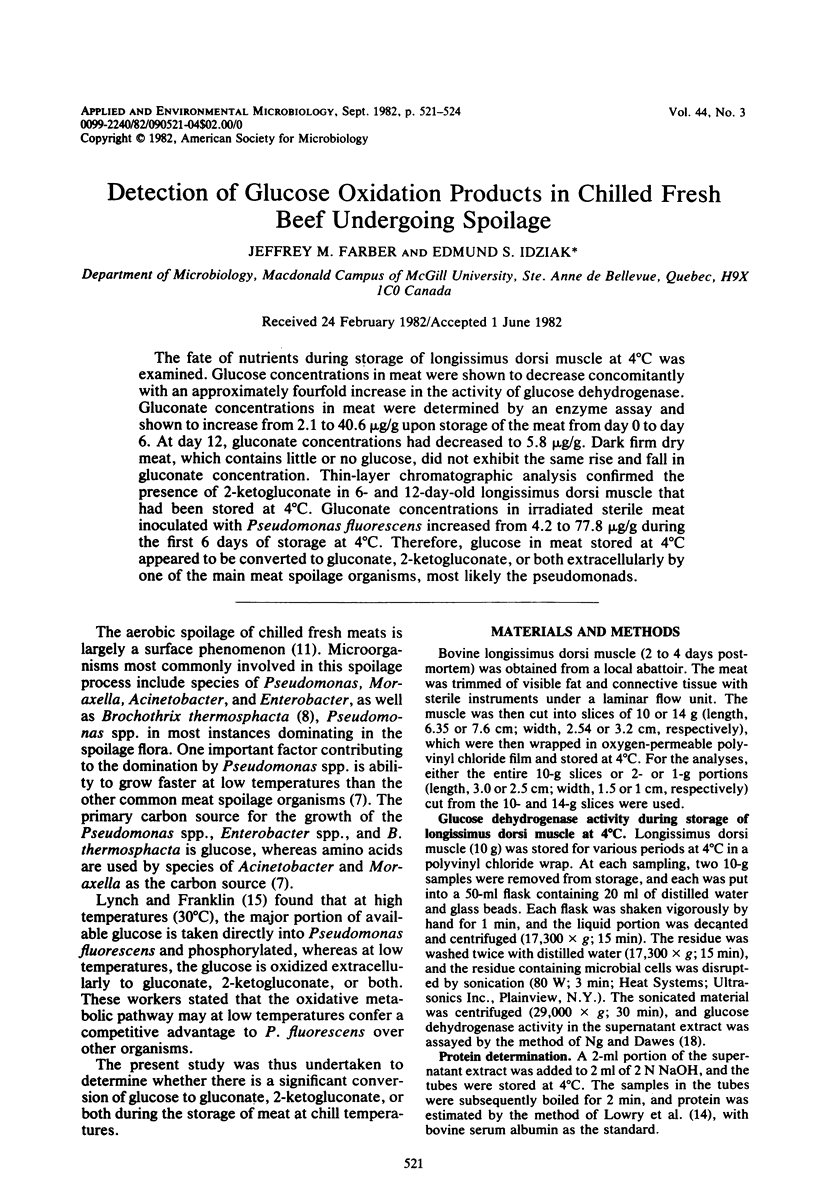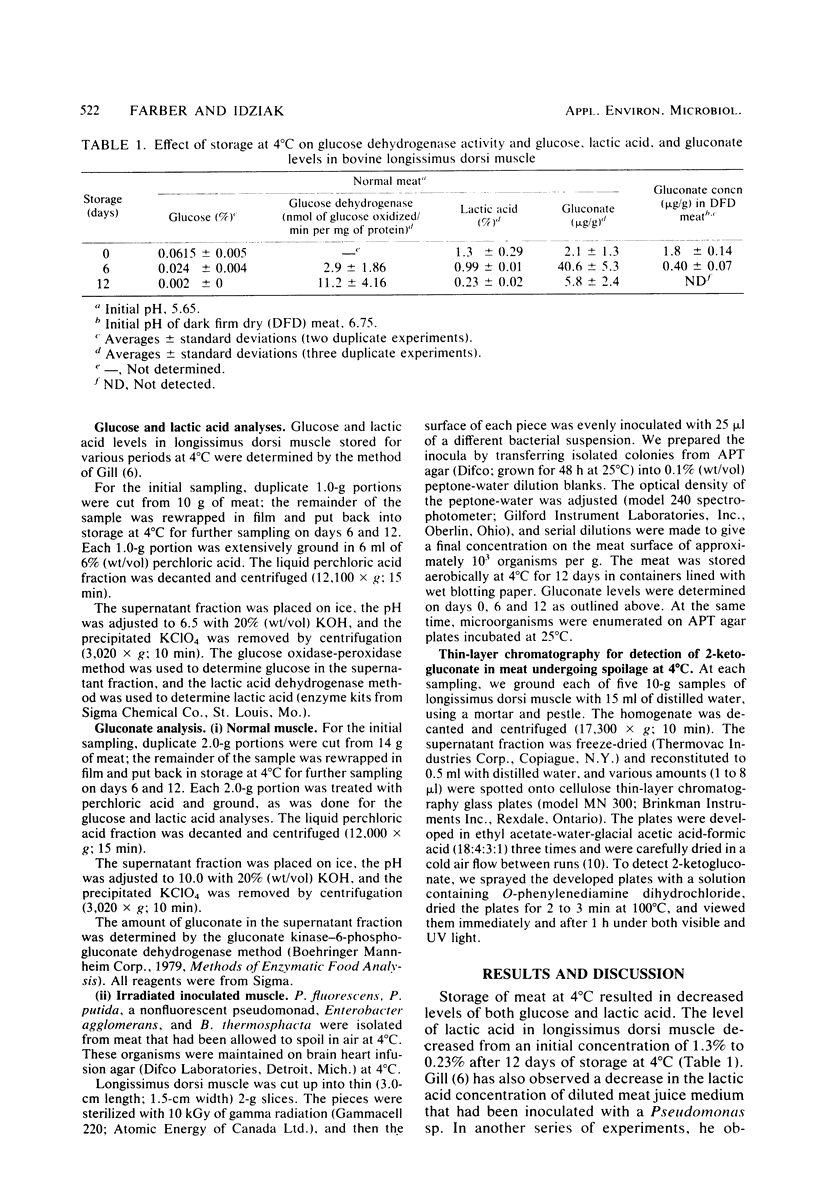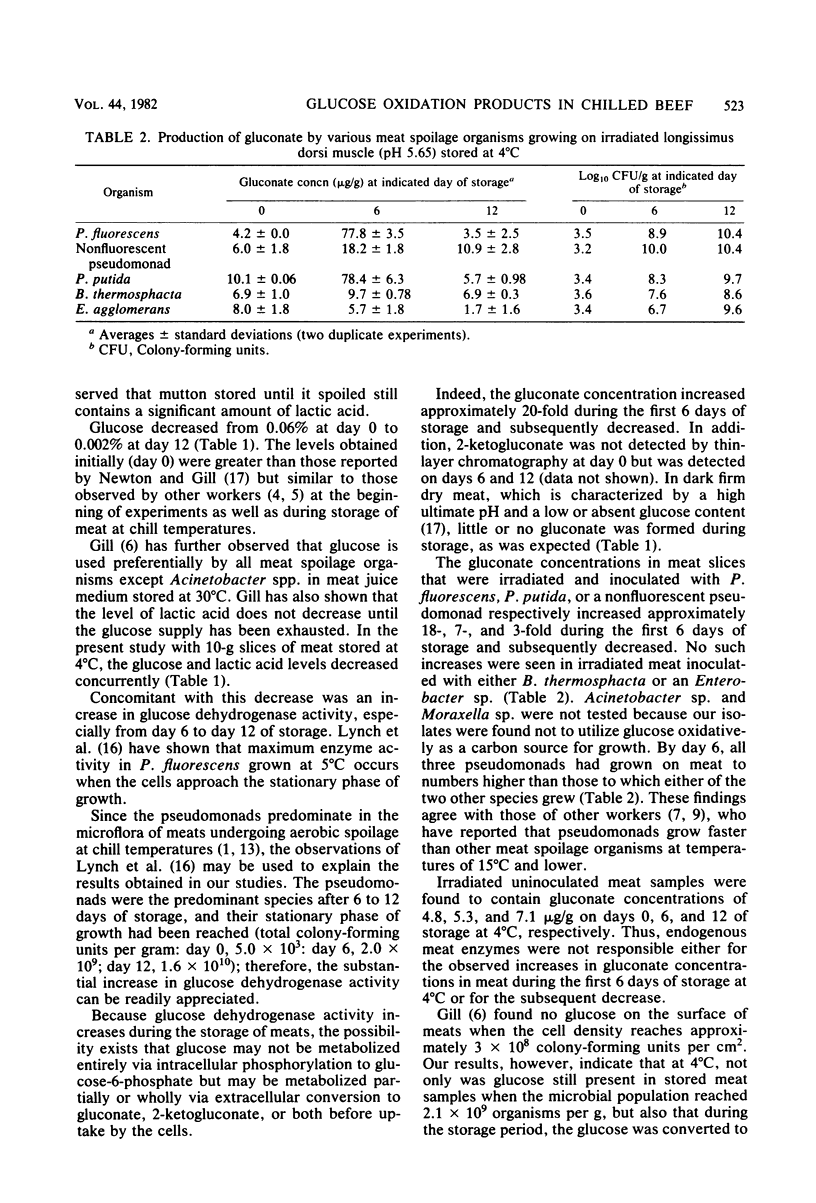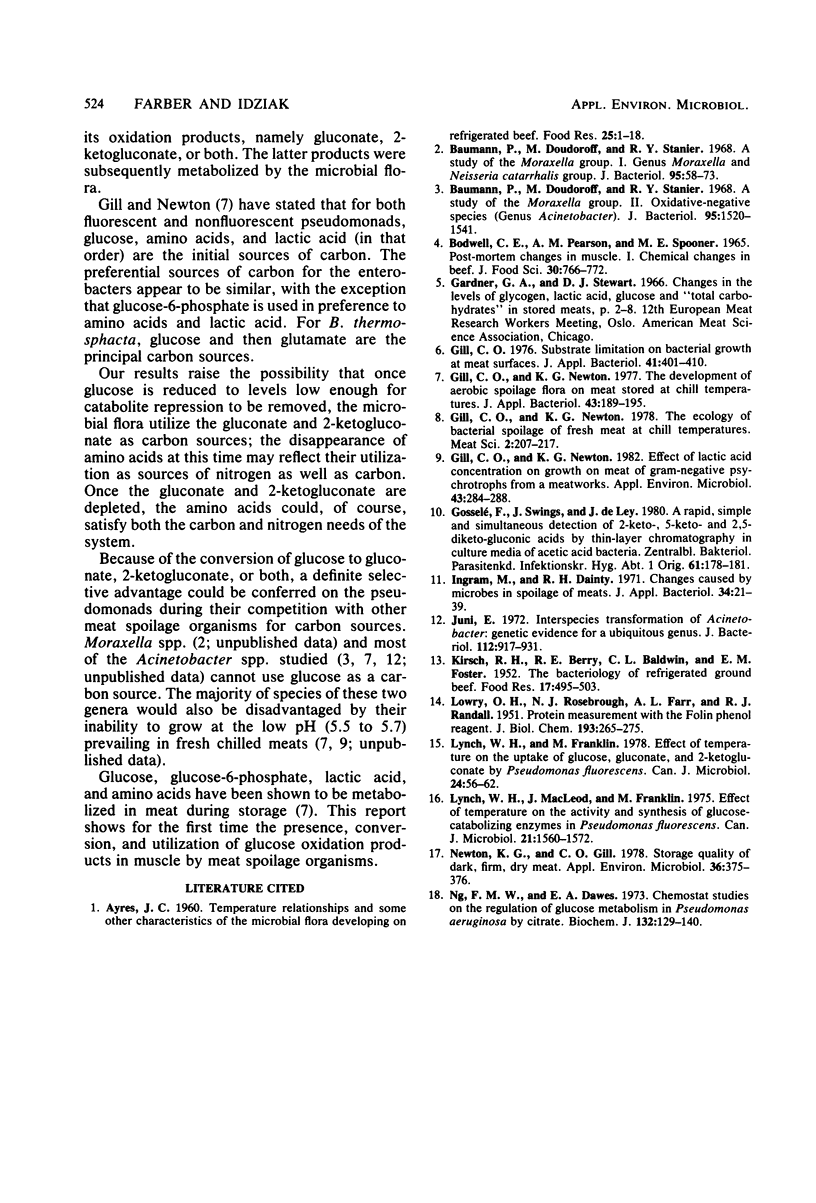Abstract
The fate of nutrients during storage of longissimus dorsi muscle at 4 degrees C was examined. Glucose concentrations in meat were shown to decrease concomitantly with an approximately fourfold increase in the activity of glucose dehydrogenase. Gluconate concentrations in meat were determined by an enzyme assay and shown to increase from 2.1 to 40.6 microgram/g upon storage of the meat from day 0 to day 6. At day 12, gluconate concentrations had decreased to 5.8 microgram/g. Dark firm dry meat, which contains little or no glucose, did not exhibit the same rise and fall in gluconate concentration. Thin-layer chromatographic analysis confirmed the presence of 2-ketogluconate in 6- and 12-day-old longissimus dorsi muscle that had been stored at 4 degrees C. Gluconate concentrations in irradiated sterile meat inoculated with Pseudomonas fluorescens increased from 4.2 to 77.8 microgram/g during the first 6 days of storage at 4 degrees C. Therefore, glucose in meat stored at 4 degrees C appeared to be converted to gluconate, 2-ketogluconate, or both extracellularly by one of the main meat spoilage organisms, most likely the pseudomonads.
Full text
PDF



Selected References
These references are in PubMed. This may not be the complete list of references from this article.
- Baumann P., Doudoroff M., Stanier R. Y. A study of the Moraxella group. II. Oxidative-negative species (genus Acinetobacter). J Bacteriol. 1968 May;95(5):1520–1541. doi: 10.1128/jb.95.5.1520-1541.1968. [DOI] [PMC free article] [PubMed] [Google Scholar]
- Baumann P., Doudoroff M., Stanier R. Y. Study of the Moraxella group. I. Genus Moraxella and the Neisseria catarrhalis group. J Bacteriol. 1968 Jan;95(1):58–73. doi: 10.1128/jb.95.1.58-73.1968. [DOI] [PMC free article] [PubMed] [Google Scholar]
- Gill C. O., Newton K. G. Effect of lactic acid concentration on growth on meat of Gram-negative psychrotrophs from a meatworks. Appl Environ Microbiol. 1982 Feb;43(2):284–288. doi: 10.1128/aem.43.2.284-288.1982. [DOI] [PMC free article] [PubMed] [Google Scholar]
- Gill C. O., Newton K. G. The development of aerobic spoilage flora on meat stored at chill temperatures. J Appl Bacteriol. 1977 Oct;43(2):189–195. doi: 10.1111/j.1365-2672.1977.tb00742.x. [DOI] [PubMed] [Google Scholar]
- Gill C. O. Substrate limitation of bacterial growth at meat surfaces. J Appl Bacteriol. 1976 Dec;41(3):401–410. doi: 10.1111/j.1365-2672.1976.tb00652.x. [DOI] [PubMed] [Google Scholar]
- Ingram M., Dainty R. H. Symposium on microbial changes in foods. Changes caused by microbes in spoilage of meats. J Appl Bacteriol. 1971 Mar;34(1):21–39. doi: 10.1111/j.1365-2672.1971.tb02266.x. [DOI] [PubMed] [Google Scholar]
- Juni E. Interspecies transformation of Acinetobacter: genetic evidence for a ubiquitous genus. J Bacteriol. 1972 Nov;112(2):917–931. doi: 10.1128/jb.112.2.917-931.1972. [DOI] [PMC free article] [PubMed] [Google Scholar]
- LOWRY O. H., ROSEBROUGH N. J., FARR A. L., RANDALL R. J. Protein measurement with the Folin phenol reagent. J Biol Chem. 1951 Nov;193(1):265–275. [PubMed] [Google Scholar]
- Lynch W. H., Franklin M. Effect of temperature on the uptake of glucose, gluconate, and 2-ketogluconate by Pseudomonas fluorescens. Can J Microbiol. 1978 Jan;24(1):56–62. doi: 10.1139/m78-010. [DOI] [PubMed] [Google Scholar]
- Lynch W. H., MacLeod J., Franklin M. Effect of temperature on the activity and synthesis of glucose-catabolizing enzymes in Pseudomonas fluorescens. Can J Microbiol. 1975 Oct;21(10):1560–1572. doi: 10.1139/m75-229. [DOI] [PubMed] [Google Scholar]
- Newton K. G., Gill C. O. Storage quality of dark, firm, dry meat. Appl Environ Microbiol. 1978 Aug;36(2):375–376. doi: 10.1128/aem.36.2.375-376.1978. [DOI] [PMC free article] [PubMed] [Google Scholar]
- Ng F. M., Dawes E. A. Chemostat studies on the regulation of glucose metabolism in Pseudomonas aeruginosa by citrate. Biochem J. 1973 Feb;132(2):129–140. doi: 10.1042/bj1320129. [DOI] [PMC free article] [PubMed] [Google Scholar]


